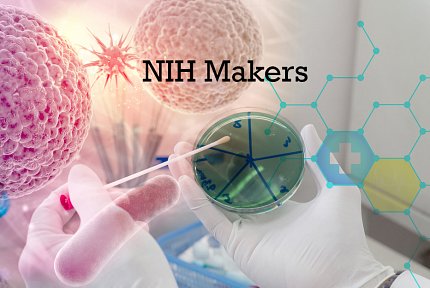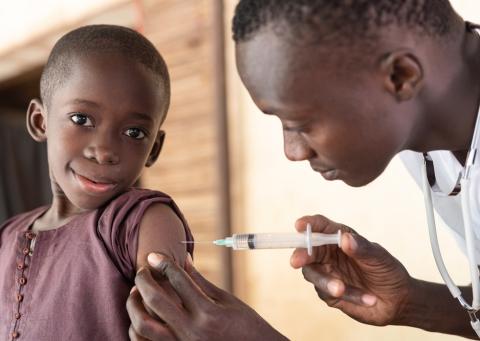Potent Protectors
Tolia Creates Algorithm to Improve Vaccines

This story is part of an ongoing series highlighting makers and inventors working in NIH’s Intramural Research Program.
While many scientists experienced research delays over the past few years, Dr. Niraj Tolia’s work accelerated during the pandemic.
For 20 years, Tolia had been studying how to improve the body’s immune response to vaccines. He was searching for a way to take readily available biological information—the structures of proteins and antigens and how antibodies interact with them—to create immunogens that help the body defend against a parasite or other outside invader.
“What was missing was the ability to use that information to generate something new that then replicates what we want the immune system to do,” said Tolia, a senior investigator at the National Institute of Allergy and Infectious Diseases (NIAID).

Photo: cawee/shutterstock
In 2018, when he arrived at NIH, Tolia wrote a computer algorithm using Rosetta, a protein manipulation and design program. The algorithm codes all the known structural data of a virus or parasite to create new protein sequences. “We’ve been able to apply it to many antigens very quickly to improve them,” he said.
Two years later, a new outside invader arrived: Covid-19.
“Our development accelerated because we convinced NIAID when the Covid-19 pandemic hit that this would be a useful tool,” said Tolia. “At that point, we had only applied it to a couple of malaria antigens and showed proof of concept.” Would it work on the SARS-CoV-2 spike protein?
“We applied [our invention] and it improved the RBD (receptor-binding domain) of spike,” Tolia said. “We applied it successfully to a new, emerging disease and the application is ready for the next pandemic.”

Photo: Riccardo Mayer/Shutterstock
Tolia’s research focuses on malaria. For him, it’s personal. Born and raised in Nairobi, Kenya, he had contracted the parasitic disease and knew people who died from it. He began to study malaria as a vaccine design approach during his Ph.D. graduate work at Cold Spring Harbor Laboratory in New York and while an associate professor at Washington University in St. Louis.
Unlike viruses, which are simpler structures, he explained, the malaria parasite has many genes that it uses to circumvent protection. Targeting them is much more complicated.
For decades, researchers have taken a protein out of the parasite and expected it would protect against malaria. “But the parasite is too smart for that,” Tolia said. “It’s evolved and has all this machinery to protect itself.
“Malaria has always stuck with me because, not only is it a devastating disease that continues to be a problem where I come from; it’s also a complex scientific problem and you cannot just take simple approaches to solve it. This is why we’re developing these advanced methods.”
These new protein sequences—developed in an NIH lab built specifically for his research—are designed to be potent protectors. “They circumvent the virus or the parasite’s ability to evade immune response because they are not natural,” he said. “The virus or parasite hasn’t gone down this road and so the designed antigens are able to be very protective.”

Photo: Ben Chambers
The algorithm is ready and working, supported by preclinical data, said Tolia. NIAID has filed provisional patent applications on multiple antigens and the method Tolia’s team developed. Anyone potentially could run these calculations for their own research, provided they have access to a supercomputer.
The next hurdle is getting these antigens into the clinic, but there’s an inertia among vaccine makers vested in their existing products, noted Tolia. Convincing them will take time.
Tolia said he remains grateful to NIH’s Intramural Research Program. “I could only really develop these multiple inventions once I relocated to the NIH because of the resources and support. I am very grateful to be here.”
